1. Rock ‘n’ Roll in the 1950s
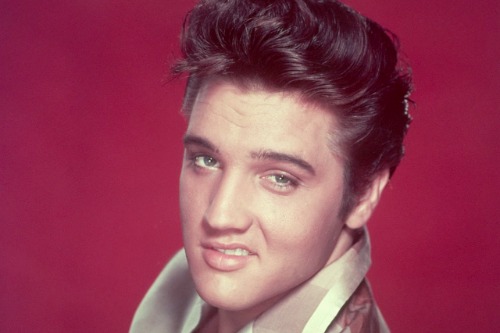
In the 1950s, rock ‘n’ roll was considered a dangerous, corrupting force in American society. Many parents and community leaders feared that the music would incite rebellion and moral decay among the youth. As artists like Elvis Presley rose to fame, local governments in places like Boston and Chicago tried to ban performances, claiming that the music’s rhythm and “suggestive” movements were a threat to public decency. They believed that rock ‘n’ roll would destroy the traditional values of American culture and promote promiscuity, according to Marla Novo from the Santa Cruz Museum of Art & History.
Ironically, the backlash only made rock ‘n’ roll more popular. The more authorities tried to suppress it, the more it became a symbol of youthful freedom and cultural change. Today, rock ‘n’ roll is seen as a key part of American music history, and the attempts to ban it are often remembered as a futile effort to stop the inevitable. It’s a classic case of trying to control what was destined to become a cultural revolution.
2. Hula Hoops in the 1950s
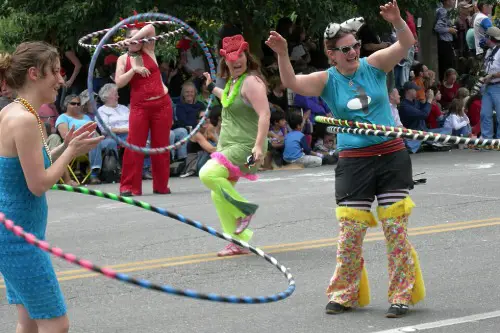
In the mid-1950s, the Hula Hoop craze took over the nation, with millions of kids spinning the colorful plastic rings around their waists, William Gildea from The Washington Post shares. However, some communities tried to ban the toy, worried that it would cause a distraction in schools. The problem wasn’t so much the toy itself, but the fact that it was seen as too distracting and possibly too frivolous for young minds. Parents feared that their kids would lose focus on education because of the obsession with the toy.
While the bans didn’t last long, the reaction was a testament to how society can sometimes overreact to harmless fads. The Hula Hoop became a symbol of carefree fun, and trying to suppress it only made it more popular. Over time, the hoop became a part of playground culture, and no one really remembers the brief period when it was considered a threat. It’s a reminder that sometimes the things we try to ban are just innocent pastimes with no real harm.
3. The Smiley Face in the 1970s

In the 1970s, the simple smiley face became so popular that some communities in the U.S. tried to ban it, particularly in schools. The reason? Some educators thought the symbol, which was primarily used in advertisements, was too associated with consumerism. They feared it was undermining the seriousness of the educational environment, encouraging a lack of focus and promoting a superficial, commercialized attitude, Poh Yong Han from Rice Media explains. It was a harmless, universally recognized symbol, but at the time, it was viewed as too distracting.
Ultimately, the ban didn’t stick, and the smiley face has become one of the most iconic symbols of positivity and joy in American culture. It represents how we can sometimes overthink the power of harmless trends, especially when they challenge established norms. Despite the brief attempt to suppress it, the smiley face continues to spread joy, proving that banning it was completely unnecessary. This moment shows that some symbols are simply too ingrained in society to be erased.
4. The Telephone in the 19th Century

When the telephone was first introduced in the late 19th century, many communities were not only skeptical but outright hostile toward it, according to Ericsson. Some places in the U.S. even tried to ban the new invention, fearing it would disrupt the way people communicated and harm traditional values of face-to-face interaction. The telephone was seen as an unnatural and intrusive technology that would change the way people connected in deeply unsettling ways. Critics argued that it was a tool for idleness and would diminish the importance of written communication.
Despite these early fears, the telephone quickly became an indispensable part of everyday life. The resistance to this “harmless” technology highlights how new inventions can provoke fear, especially when they challenge the status quo. We can look back today and laugh at the absurdity of banning something that became a cornerstone of modern society. The telephone’s eventual dominance shows how the initial pushback was a futile attempt to stop progress.
5. The Peace Sign in the 1960s
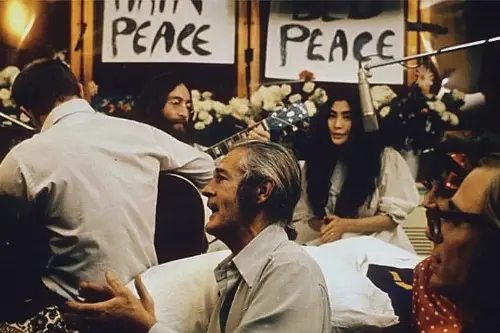
The peace sign, widely associated with the counterculture movement of the 1960s, was actually banned in some places due to its association with anti-establishment sentiments. Communities that were more conservative, especially during the Vietnam War era, saw the symbol as a form of rebellion and dissent, according to Susan Christian from The Los Angeles Times. They feared that it could inspire disobedience among young people, particularly in schools, where it was often worn on buttons or t-shirts. For these areas, the peace sign was not just a symbol of peace but of protest against the government and the war.
In retrospect, the peace sign has become an enduring symbol of social activism and remains a key image in the fight for peace and justice. Attempts to ban it only highlighted how deeply the symbol resonated with the public and youth in particular. Rather than quelling the movement, the bans fueled its spread, showing how futile it is to try to suppress symbols of social change. The peace sign is now universally recognized as a positive symbol, far removed from its controversial beginnings.
6. Coffee in the 17th Century

In the 1600s, coffee was a controversial beverage in Europe, and the first American colonies weren’t far behind in banning it. When coffeehouses began to appear, some religious leaders and officials in the colonies tried to ban the drink, believing it was an inappropriate substitute for traditional social gatherings like tea or ale. They feared it was a sign of moral decay and that people would gather around coffee rather than participate in more structured, “proper” social activities. There was even talk of outlawing coffee because it was seen as a threat to the cultural fabric of the time.
Despite the efforts to restrict it, coffee became one of the most widely consumed beverages in the world, especially in America. The bans only made people more curious, and soon coffeehouses became hubs for intellectual and social exchange. Today, coffee is a staple of American culture, and its early prohibition seems almost laughable. It’s a perfect example of how efforts to ban something harmless only accelerate its widespread acceptance.
7. Dungeons & Dragons in the 1980s

When the tabletop role-playing game Dungeons & Dragons (D&D) gained popularity in the 1980s, some parents and religious groups tried to ban it, claiming it promoted Satanism and witchcraft. These critics believed that the game’s fantasy elements, including magic and mythical creatures, were harmful to young minds. They argued that playing D&D would encourage children to dabble in the occult, foster violent behavior, and distance them from religious values. The idea of a harmless game involving imagination and storytelling was seen as a threat to moral stability.
The backlash against D&D only increased its popularity, as the game became a badge of defiance against the so-called moral authorities. Parents’ attempts to ban it actually made it a cultural phenomenon, and today D&D is viewed as a classic game that fosters creativity, teamwork, and problem-solving. What seemed like a harmless escape for many players was met with an irrational fear of the unknown. Dungeons & Dragons is now considered a cornerstone of gaming culture and a symbol of how attempts to ban something only lead to greater interest and acceptance.
8. The Teletubbies in the 1990s
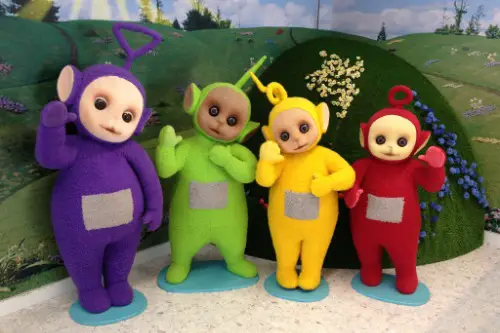
The popular children’s show Teletubbies, which debuted in the late 1990s, faced a surprising amount of controversy. Some parents and educational groups tried to ban the show, arguing that it was too “nonsensical” and would stunt children’s cognitive development. The colorful characters and their strange, repetitive language were seen as detrimental to young minds. Critics claimed that the show lacked educational value, making it a poor choice for preschool children.
Despite the initial backlash, Teletubbies went on to become a beloved cultural phenomenon, known for its surrealism and joyful celebration of childhood. It introduced young viewers to a world of imagination and wonder, something that many parents eventually embraced. The moral of the story is that sometimes, what seems silly and nonsensical to adults is exactly what children need for creativity and exploration. The failed attempts to ban Teletubbies only proved how harmless and impactful the show actually was.
9. Bubble Wrap in the 1960s

When Bubble Wrap was first introduced in the 1960s, it wasn’t just a packaging material—it quickly became a popular pastime. However, some schools and businesses tried to ban it, worried that kids would waste the material by popping the bubbles. Teachers feared that the noise would be disruptive, while employers thought that it would lead to unnecessary distractions in the workplace. The notion of banning something so harmless and fun seemed ridiculous to many, but it was an attempt to maintain order in the face of what was seen as a disruptive fad.
Ironically, the effort to restrict Bubble Wrap only fueled its popularity, and the act of popping the bubbles became a cultural obsession. People all over the world now enjoy popping it for stress relief, and Bubble Wrap remains a staple in packaging. This is a perfect example of how attempts to ban something as innocent as popping bubbles can backfire. In the end, it’s a harmless joy that continues to entertain and relieve stress, proving that some things are simply too fun to be banned.
10. The “Funky Chicken” Dance in the 1970s
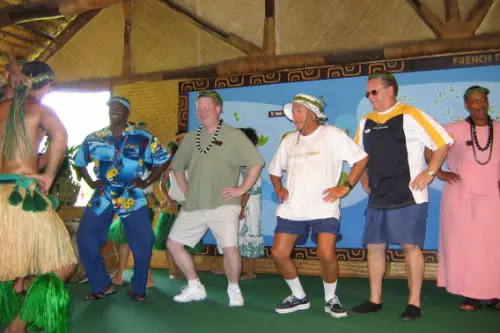
In the 1970s, the “Funky Chicken” dance, which became popular at parties and social gatherings, faced opposition in some places due to its perceived immorality. Some critics thought the dance, with its wild, wobbly movements and silly gestures, was inappropriate for public settings. Schools and even local governments in certain areas tried to ban it, fearing that it was too goofy and would lead to a breakdown of serious social conduct. The concern was that such dances, which were viewed as “lowbrow,” would encourage people to behave in a more carefree, rebellious manner.
The attempted bans, of course, did little to stop the dance from taking off. In fact, they made it even more of a cultural phenomenon, with people embracing the silly movements as a fun and carefree way to express themselves. The “Funky Chicken” became an iconic dance in the 1970s, a symbol of freedom and self-expression. Today, it’s seen as a quirky relic of a time when social conventions were being challenged, and the push to ban it now seems almost laughable.
11. The Macarena in the 1990s

In the mid-1990s, the Macarena dance took over dance floors across the country. While the song was incredibly catchy and fun, some cities and school districts tried to ban it, claiming it was a “distraction” and “annoying.” Some schools even went as far as to create policies prohibiting students from performing the dance during school hours. The reasoning behind these bans was that the repetitive nature of the dance and song could interfere with educational focus and productivity.
As you might expect, these attempts to ban the Macarena only fueled its popularity, turning it into one of the biggest global dance crazes of the decade. The bans proved futile, as the song and its accompanying dance were already too embedded in pop culture. The Macarena became a symbol of the 90s, reminding us that when something is universally enjoyed, attempts to suppress it are often destined to fail. It’s one of those moments where trying to control a harmless trend only made it more iconic.
12. The Watermelon in the 19th Century

In the 1800s, some communities in the U.S. tried to ban watermelon during the summer, viewing it as a “frivolous” fruit. The watermelon was associated with African American culture, and some racist groups sought to prevent its consumption by white families, believing it was somehow linked to laziness or a lack of refinement. This attempt to ban the fruit was rooted in deep racial prejudice and an effort to control what was considered acceptable. Despite the efforts, watermelon continued to be a beloved summer fruit for many Americans.
The desire to ban watermelon is a strange chapter in the history of racial stereotypes and food culture. It’s hard to imagine a world where such an innocent fruit was seen as controversial. Today, watermelon is one of the most popular summer fruits, enjoyed by people of all backgrounds. The moment when it was nearly banned only highlights the absurdity of associating something as harmless as a fruit with prejudice and fear.
13. The Barbie Doll in the 1950s

When Barbie was first introduced in 1959, many people, especially parents and feminist groups, tried to ban her. They argued that Barbie was an unrealistic representation of female beauty and an inappropriate role model for young girls. Critics felt that Barbie’s disproportionate figure and emphasis on fashion over intellect would negatively influence children’s perceptions of themselves and their futures. Despite the backlash, Barbie became one of the most iconic toys in American history.
The early criticism of Barbie didn’t stop her from becoming a cultural institution. Over the years, Barbie has evolved, with more diverse dolls and career options, challenging the original criticism and evolving with societal changes. What was initially seen as a harmful toy has become a symbol of empowerment and possibility for young girls. The moment when people tried to ban Barbie only made her an even more significant cultural artifact, showing how harmless things can be misinterpreted.
14. The “Tease” Hairstyles in the 1980s

In the 1980s, big hair was all the rage, and teasing your hair to dramatic heights was a key part of the fashion trend. However, some schools and employers tried to ban this hairstyle, claiming it was unprofessional or distracting. They argued that the big, teased hair didn’t reflect seriousness or decorum, especially in academic or business settings. The notion that a harmless fashion choice could be grounds for a ban seemed overly controlling.
Despite the backlash, big hair became a defining characteristic of the 1980s. People loved the rebelliousness of teasing their hair to new heights, and it became an emblem of self-expression. Today, the bold hairdos of the 1980s are often celebrated as part of the fun, experimental spirit of the time. The bans on teased hair only increased its popularity, proving that trying to suppress harmless personal expression rarely works in the long run.


